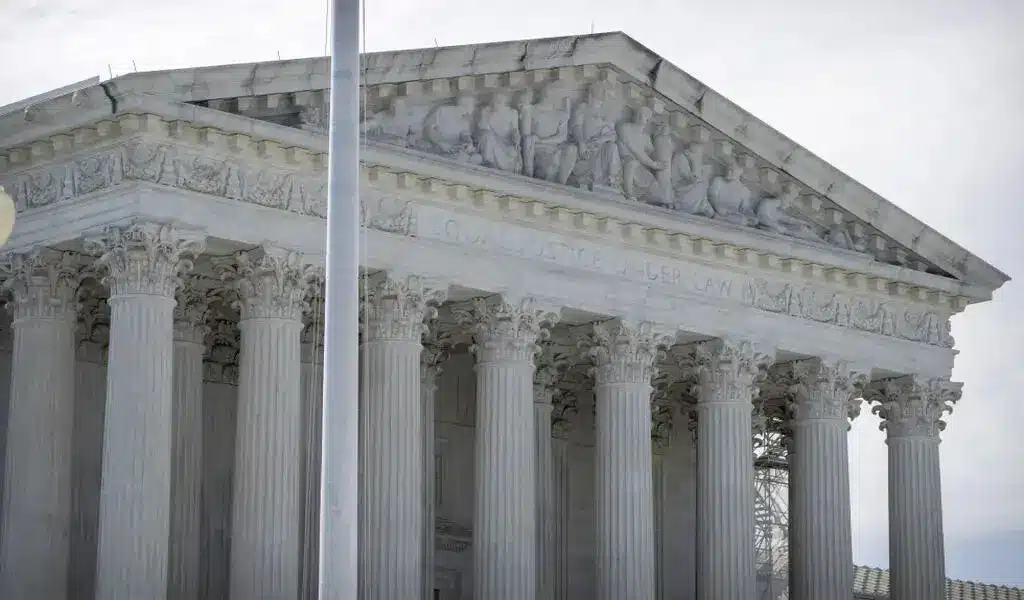News
Armed conflicts have been a permanent challenge for Burma
young female recruit of the Kachin Independence Army, one of the country's largest armed ethnic groups, participates in battle drills at a training camp near Laiza in Myanmar
The fresh and fierce fighting in Burma’s Kachin and Shan states is a signal that Burma is on the verge of a civil war that may ultimately involve a large percentage of the country’s ethnic armed groups.
In Shan State, the Burmese Army—using around 1,500 troops, including artillery battalions—has launched a major offensive against the Shan State Army (SSA), which has about 1,000 troops defending its headquarters in Wan Hai, Mong Hsu Township. Injured Burmese troops were reportedly evacuated from the area to major cities using helicopters from Nam Hsan Air Force Base.
In Kachin State, the fighting is equally tough, with landmines exploding, bridges being blown up and soldiers being shot dead in ambushes. In addition, the Kachin Women’s Association Thailand (KWAT) claims that at least 18 female Kachins—aged between 15 and 50 years old—were gang-raped by Burmese soldiers during the recent armed conflict. As a result of the fighting and atrocities, the resulting humanitarian crisis is fast getting worse, with some 16,000 people recently forced to flee their homes.
The escalating ethnic strife facing Burma’s new government is threatening both internal and border security, and stands as a stark contrast to President Thein Sein’s call in April for peace and stability in the ethnic areas.
Assumed office 30 March 2011 Preceded by Than Shwe Chairman of the State Peace and Development Council
Thein Sein, it should be noted, is also the Chairman of the Central Committee for Progress of Border Areas and National Races. But despite his pledge and position of responsibility, the Alternative Asean Network on Burma (ALTSEAN-Burma), a regional human rights group, said in a statement that Burma’s “new” government has failed to take any meaningful steps towards political, legal and economic reforms.
In a five-page brief, ALTSEAN-Burma said that Burmese troops continued “to attack, kill and rape ethnic civilians,” while over 2,000 political prisoners are still being detained under atrocious conditions.
“If this is Thein Sein in his first 100 days, one dreads to think what the rest of the year is going to be like for the people of Burma,” said ALTSEAN-Burma’s coordinator, Debbie Stothard. “His actions and policies seem to be exactly the opposite of the promises he made.”
Armed conflicts have been a permanent challenge for Burma since the country won its independence from Britain in 1948. But a series of ceasefire agreements, signed following the collapse of the Communist Party of Burma (CPB) in 1989, brought open conflict with ethnic militias to a halt.
Since then, the ceasefire groups, such as United Wa State Army (UWSA) and the Kachin Independence Organization (KIO), have existed in uncomfortable peace with the Burmese army, maintaining self-administered fiefdoms in the areas under their control.
Over the past years, however, the situation has worsened following the introduction of the Burmese military leaders’ scheme to extend its control over the ceasefire ethnic groups. The so-called Border Guard Force (BGF) plan—tied to the timing of last year’s election—threatened to shake a fragile status quo in the ethnic areas, and the fighting many had predicted has now become a reality.
Some observers said that the huge investments by Burmese and Chinese businesses in both infrastructure and hydropower dams in the ethnic areas is a contributing factor—if not the root cause—of the renewed conflict.
They said that because there is no guarantee that the mega-projects will bring an improved standard of living for the average citizens of the border states—while the military and elite who rule the country will clearly benefit from the resulting foreign direct investment dollars and export earnings—the resentment of the local ethnic groups has boiled over into armed conflict to protect their turf.
In addition, the Burmese government is using the threats to their projects as an excuse to attack the ethnic armed groups and attain by military force what they could not achieve by coercion with respect to the BGF.
“By using the protection of the dams to justify military action, Naypyidaw tries to cover up its intention to eliminate the KIA and enlist Chinese support to squeeze the armed group out of its traditional territory,” noted Yun Sun, a foreign policy analyst in Washington D.C. who was a Beijing-based China analyst for the International Crisis Group from 2008-2011.
In an article published by CSIS Pacific Forum, she also said, “The KIA sees China’s desire for border stability and dam safety, and is using the conflict to force China into mediating a settlement.”
However, the military approach is risky for both sides, she argued.
By jeopardizing China’s border stability and vested interests, Naypyidaw may invite pressure from and intervention by China in its ethnic affairs,
And Yun Sun pointed out that KIA has even more at stake, because China has accused Kachin groups of harassing and blackmailing Chinese hydropower companies. Unlike the UWSA, which has refrained from colliding with the Burmese military, the KIA is openly challenging China’s bottom-line interests, and as a result is being seen as deliberately breaking the status quo and rejecting Naypyidaw’s offer of a ceasefire.
This may already have backfired on the KIA, because while the KIA had reached an agreement in April 2010 with other Sino-Burmese border-based groups such as the UWSA, Shan State Army (SSA) and the National Democratic Alliance Army (NDAA) to support each other if attacked by the Burmese Army, heavy pressure from China prevented the UWSA from helping in the Kachin and Shan state fighting.
Thus, KIA and SSA have formed an alliance with the ethnic Chin, Karen, Karenni and Mon armed groups that are based on the Thai-Burmese border, forming an umbrella alliance called the United Nationalities Federal Council (UNFC).
“Amidst our differences and diversities over the past five or six decades, we have managed to establish an alliance through creating a common platform on which we all can come together and share as a family. We all agree to work together towards bringing democracy and federalism into Burma,” said Colonel Solomon of the Chin National Front (CNF), a member of the UNFC, according to the Chinland Guardian, an ethnic Chin news agency.
In a statement issued on February 17, the UNFC said that its basic principles and aims include working for better recognition of the ethnic armed groups, for ethnic equality, rights and self-determination, and for a genuine democratic federal Union of Burma.
Recently, ethnic leaders meeting with EU officials in Bangkok called for the EU to broker political dialogue between Burma’s government and its ethnic groups.
“All the government troops will have to retreat to their former bases if there is a ceasefire,” said Nai Hang Thar, the secretary of the New Mon State Party. “Also, the government must declare ceasefires with all the ethnic armed groups in the country, not only in Kachin State.”
Zipporah Sein, the general secretary of the Karen National Union, said, “We always welcome dialogue. But the dialogue must involve all ethnic groups, not on a case by case basis. Our aim is to establish a federal state.”

News
Google’s Search Dominance Is Unwinding, But Still Accounting 48% Search Revenue

Google is so closely associated with its key product that its name is a verb that signifies “search.” However, Google’s dominance in that sector is dwindling.
According to eMarketer, Google will lose control of the US search industry for the first time in decades next year.
Google will remain the dominant search player, accounting for 48% of American search advertising revenue. And, remarkably, Google is still increasing its sales in the field, despite being the dominating player in search since the early days of the George W. Bush administration. However, Amazon is growing at a quicker rate.
Google’s Search Dominance Is Unwinding
Amazon will hold over a quarter of US search ad dollars next year, rising to 27% by 2026, while Google will fall even more, according to eMarketer.
The Wall Street Journal was first to report on the forecast.
Lest you think you’ll have to switch to Bing or Yahoo, this isn’t the end of Google or anything really near.
Google is the fourth-most valued public firm in the world. Its market worth is $2.1 trillion, trailing just Apple, Microsoft, and the AI chip darling Nvidia. It also maintains its dominance in other industries, such as display advertisements, where it dominates alongside Facebook’s parent firm Meta, and video ads on YouTube.
To put those “other” firms in context, each is worth more than Delta Air Lines’ total market value. So, yeah, Google is not going anywhere.
Nonetheless, Google faces numerous dangers to its operations, particularly from antitrust regulators.
On Monday, a federal judge in San Francisco ruled that Google must open up its Google Play Store to competitors, dealing a significant blow to the firm in its long-running battle with Fortnite creator Epic Games. Google announced that it would appeal the verdict.
In August, a federal judge ruled that Google has an illegal monopoly on search. That verdict could lead to the dissolution of the company’s search operation. Another antitrust lawsuit filed last month accuses Google of abusing its dominance in the online advertising business.
Meanwhile, European regulators have compelled Google to follow tough new standards, which have resulted in multiple $1 billion-plus fines.

Pixa Bay
Google’s Search Dominance Is Unwinding
On top of that, the marketplace is becoming more difficult on its own.
TikTok, the fastest-growing social network, is expanding into the search market. And Amazon has accomplished something few other digital titans have done to date: it has established a habit.
When you want to buy anything, you usually go to Amazon, not Google. Amazon then buys adverts to push companies’ products to the top of your search results, increasing sales and earning Amazon a greater portion of the revenue. According to eMarketer, it is expected to generate $27.8 billion in search revenue in the United States next year, trailing only Google’s $62.9 billion total.
And then there’s AI, the technology that (supposedly) will change everything.
Why search in stilted language for “kendall jenner why bad bunny breakup” or “police moving violation driver rights no stop sign” when you can just ask OpenAI’s ChatGPT, “What’s going on with Kendall Jenner and Bad Bunny?” in “I need help fighting a moving violation involving a stop sign that wasn’t visible.” Google is working on exactly this technology with its Gemini product, but its success is far from guaranteed, especially with Apple collaborating with OpenAI and other businesses rapidly joining the market.
A Google spokeswoman referred to a blog post from last week in which the company unveiled ads in its AI overviews (the AI-generated text that appears at the top of search results). It’s Google’s way of expressing its ability to profit on a changing marketplace while retaining its business, even as its consumers steadily transition to ask-and-answer AI and away from search.

Google has long used a single catchphrase to defend itself against opponents who claim it is a monopoly abusing its power: competition is only a click away. Until recently, that seemed comically obtuse. Really? We are going to switch to Bing? Or Duck Duck Go? Give me a break.
But today, it feels more like reality.
Google is in no danger of disappearing. However, every highly dominating company faces some type of reckoning over time. GE, a Dow mainstay for more than a century, was broken up last year and is now a shell of its previous dominance. Sears declared bankruptcy in 2022 and is virtually out of business. US Steel, long the foundation of American manufacturing, is attempting to sell itself to a Japanese corporation.
SOURCE | CNN
News
2024 | Supreme Court Won’t Hear Appeal From Elon Musk’s X Platform Over Warrant In Trump Case

Washington — Trump Media, The Supreme Court announced Monday that it will not hear an appeal from social media platform X about a search warrant acquired by prosecutors in the election meddling case against former President Donald Trump.
The justices did not explain their rationale, and there were no recorded dissents.
The firm, which was known as Twitter before being purchased by billionaire Elon Musk, claims a nondisclosure order that prevented it from informing Trump about the warrant obtained by special counsel Jack Smith’s team violated its First Amendment rights.
The business also claims Trump should have had an opportunity to exercise executive privilege. If not reined in, the government may employ similar tactics to intercept additional privileged communications, their lawyers contended.
Supreme Court Won’t Hear Appeal From Elon Musk’s X Platform Over Warrant In Trump Case
Two neutral electronic privacy groups also joined in, urging the high court to hear the case on First Amendment grounds.
Prosecutors, however, claim that the corporation never shown that Trump utilized the account for official purposes, therefore executive privilege is not a problem. A lower court also determined that informing Trump could have compromised the current probe.

Trump utilized his Twitter account in the weeks preceding up to his supporters’ attack on the Capitol on January 6, 2021, to spread false assertions about the election, which prosecutors claim were intended to create doubt in the democratic process.
The indictment describes how Trump used his Twitter account to encourage his followers to travel to Washington on Jan. 6, pressuring Vice President Mike Pence to reject the certification, and falsely claiming that the Capitol crowd, which battered police officers and destroyed glass, was peaceful.
Supreme Court Won’t Hear Appeal From Elon Musk’s X Platform Over Warrant In Trump Case
That case is now moving forward following the Supreme Court’s verdict in July, which granted Trump full immunity from criminal prosecution as a former president.
The warrant arrived at Twitter amid quick changes implemented by Musk, who bought the company in 2022 and has since cut off most of its workforce, including those dedicated to combating disinformation and hate speech.
SOURCE | AP
News
The Supreme Court Turns Down Biden’s Government Appeal in a Texas Emergency Abortion Matter.

(VOR News) – A ruling that prohibits emergency abortions that contravene the Supreme Court law in the state of Texas, which has one of the most stringent abortion restrictions in the country, has been upheld by the Supreme Court of the United States. The United States Supreme Court upheld this decision.
The justices did not provide any specifics regarding the underlying reasons for their decision to uphold an order from a lower court that declared hospitals cannot be legally obligated to administer abortions if doing so would violate the law in the state of Texas.
Institutions are not required to perform abortions, as stipulated in the decree. The common populace did not investigate any opposing viewpoints. The decision was made just weeks before a presidential election that brought abortion to the forefront of the political agenda.
This decision follows the 2022 Supreme Court ruling that ended abortion nationwide.
In response to a request from the administration of Vice President Joe Biden to overturn the lower court’s decision, the justices expressed their disapproval.
The government contends that hospitals are obligated to perform abortions in compliance with federal legislation when the health or life of an expectant patient is in an exceedingly precarious condition.
This is the case in regions where the procedure is prohibited. The difficulty hospitals in Texas and other states are experiencing in determining whether or not routine care could be in violation of stringent state laws that prohibit abortion has resulted in an increase in the number of complaints concerning pregnant women who are experiencing medical distress being turned away from emergency rooms.
The administration cited the Supreme Court’s ruling in a case that bore a striking resemblance to the one that was presented to it in Idaho at the beginning of the year. The justices took a limited decision in that case to allow the continuation of emergency abortions without interruption while a lawsuit was still being heard.
In contrast, Texas has been a vocal proponent of the injunction’s continued enforcement. Texas has argued that its circumstances are distinct from those of Idaho, as the state does have an exemption for situations that pose a significant hazard to the health of an expectant patient.
According to the state, the discrepancy is the result of this exemption. The state of Idaho had a provision that safeguarded a woman’s life when the issue was first broached; however, it did not include protection for her health.
Certified medical practitioners are not obligated to wait until a woman’s life is in imminent peril before they are legally permitted to perform an abortion, as determined by the state supreme court.
The state of Texas highlighted this to the Supreme Court.
Nevertheless, medical professionals have criticized the Texas statute as being perilously ambiguous, and a medical board has declined to provide a list of all the disorders that are eligible for an exception. Furthermore, the statute has been criticized for its hazardous ambiguity.
For an extended period, termination of pregnancies has been a standard procedure in medical treatment for individuals who have been experiencing significant issues. It is implemented in this manner to prevent catastrophic outcomes, such as sepsis, organ failure, and other severe scenarios.
Nevertheless, medical professionals and hospitals in Texas and other states with strict abortion laws have noted that it is uncertain whether or not these terminations could be in violation of abortion prohibitions that include the possibility of a prison sentence. This is the case in regions where abortion prohibitions are exceedingly restrictive.
Following the Supreme Court’s decision to overturn Roe v. Wade, which resulted in restrictions on the rights of women to have abortions in several Republican-ruled states, the Texas case was revisited in 2022.
As per the orders that were disclosed by the administration of Vice President Joe Biden, hospitals are still required to provide abortions in cases that are classified as dire emergency.
As stipulated in a piece of health care legislation, the majority of hospitals are obligated to provide medical assistance to patients who are experiencing medical distress. This is in accordance with the law.
The state of Texas maintained that hospitals should not be obligated to provide abortions throughout the litigation, as doing so would violate the state’s constitutional prohibition on abortions. In its January judgment, the 5th United States Circuit Court of Appeals concurred with the state and acknowledged that the administration had exceeded its authority.
SOURCE: AP
SEE ALSO:
Could Last-Minute Surprises Derail Kamala Harris’ Campaign? “Nostradamus” Explains the US Poll.
-

 News4 years ago
News4 years agoLet’s Know About Ultra High Net Worth Individual
-
Entertainment2 years ago
Mabelle Prior: The Voice of Hope, Resilience, and Diversity Inspiring Generations
-
News11 years ago
Enviromental Groups Tell Mekong Leaders Lao Dam Evaluation Process Flawed
-

 Health4 years ago
Health4 years agoHow Much Ivermectin Should You Take?
-

 Tech3 years ago
Tech3 years agoTop Forex Brokers of 2023: Reviews and Analysis for Successful Trading
-

 Lifestyles3 years ago
Lifestyles3 years agoAries Soulmate Signs
-

 Entertainment3 years ago
Entertainment3 years agoWhat Should I Do If Disney Plus Keeps Logging Me Out of TV?
-

 Health3 years ago
Health3 years agoCan I Buy Ivermectin Without A Prescription in the USA?


